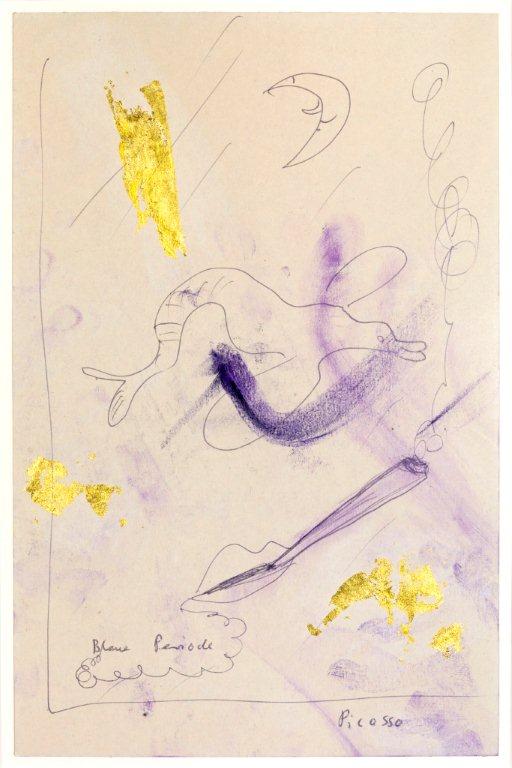In 1963, German artist Sigmar Polke (alongside artists Konrad Fischer-Lueg and Gerhard Richter) launched Capitalist Realism in response to Pop art, incorporating common advertising images of food in his first works shown in Düsseldorf. These early works and the influence of Pop fueled a career full of experimentation, found images, stylistic changes, and adept referencing, making Polke virtually uncategorizable. Polke also possessed a unique ability to appropriate images and techniques from other artists, seen here in Blue Period that incorporates a hint of Picasso’s lyrical drawing style combined with gold leaf passages. Even in this intimate drawing, a sense of sincere admiration coexists with an ironic distance, a testament to Polke’s skill and complexity as an artist. Polke’s works are collected by virtually every major museum around the world. In 2002, the Dallas Museum of Art organized the exhibition, Sigmar Polke History of Everything: Paintings and Drawings 1998-2003, which traveled to the Tate Modern, London.

Sigmar Polke
BLUE PERIOD
c. 1982-1984
ink and gold leaf on paper
11 1/2 x 7 1/2 inches